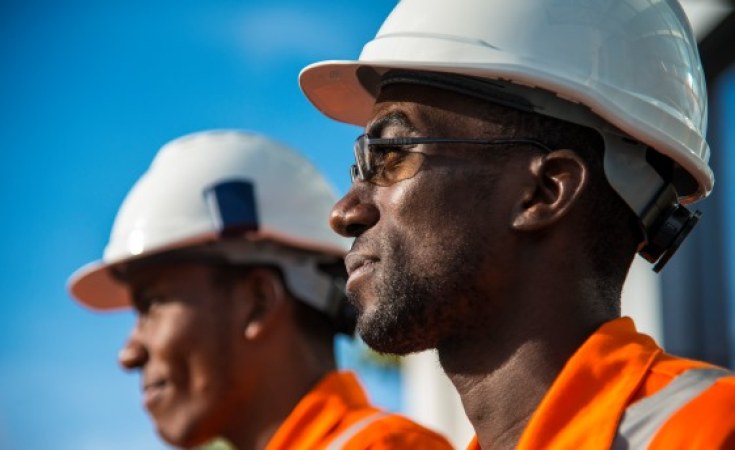As the sun rises over the Kusile Power Station site in Mpumalanga, South Africa, the Steam Turbine Construction team carefully inspects the new turbines being installed. With winter looming, the site is cold and dark in the early hours, however it is already alive with a flurry of activity.
Each day starts with a toolbox tour where the previous day's work is inspected and decisions are made about the day ahead. "Every day is different," says Roland Ester, Centerline Manager Kusile Power Plant, GE Power. "Not one day is the same as we regularly find ourselves facing challenges and issues that we need to solve."
Roland and his team travel the world working on some of GE's biggest steam turbine installation projects. Before taking charge at the Kusile Power Station programme, Roland was based in Saudi Arabia, developing a power plant to help the kingdom meet its growing energy needs. Saudi Arabia faces extremely hot summers, so the power technologies installed needed to withstand high temperatures.
Having spent many years in Saudi Arabia, Roland and his team were moved to Kusile to provide technical support at the site. His team are responsible for the installation of advanced technology turbines that will power Kusile. Roland explains that while Saudi Arabia might have higher summer temperatures than South Africa, similar turbines are being installed at Kusile, which also experiences hot summers.
Kusile Power Station is a coal-fired power plant under construction by state electricity utility Eskom. Development began in August 2008 and is expected to be complete by 2018. The plant integrates six generating units, each with a capacity of 800MW, bringing 4,800 megawatts to the grid. Kusile's first unit is scheduled to start commercial operations in 2014, while the last unit is expected to come online in 2018.
"While the HP turbine arrives on site fully assembled, the low-pressure turbine is too heavy to be transported and has to be assembled at Kusile," says Roland. Building one unit usually takes between six to eight months, and requires a team with the knowledge and skills to do so.
"Our team is highly skilled with on average of ten years of experience," says Roland. "We share our knowledge and skills with the local team so they can learn first-hand about constructing steam turbines." It is challenging and technical work.
Once commissioned, Kusile is expected to become the world's fourth-largest coal-fired power plant. It will be the first South African power facility to incorporate wet flue gas desulphurisation (FGD) technology, a state-of-the-art solution used to remove oxides of sulphur, such as sulphur dioxide, from exhaust flue gasses, ensuring its compliance with stringent environmental requirements and to meet air quality standards



